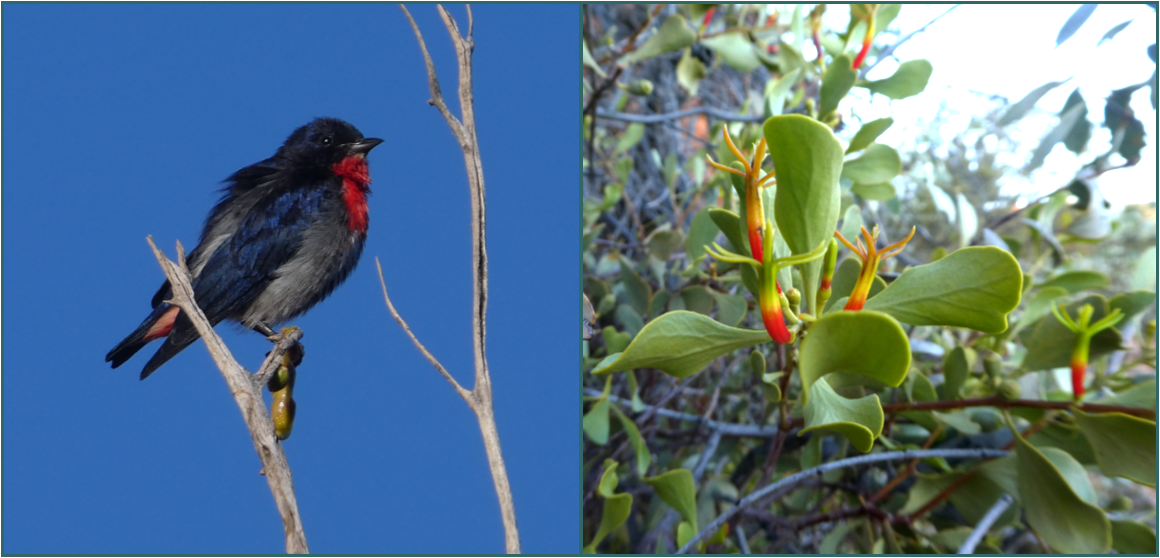
Ever wondered about how a new Mistletoe plant comes about? As with most other plants, it relies on birds for seed dispersal and the Mistletoebird (Dicaeum hirundinaceum) is the key. They are one of the major species that feeds on Mistletoe fruit. Another local species that consumes the fruit is the Spiny-cheeked Honeyeater (Acanthagenys rufogularis). A Mistletoebird will eat the fruit when it is ripe but the seed passes through undigested and coated in a thick sticky coating. When the seed passes, the coating sticks to the downy feathers around the bird’s cloaca, in turn irritating it enough that it seeks out a branch on which to wipe it off.
Once the seed has been wiped onto a live branch, it can begin to germinate. When a Mistletoe seed germinates, it taps a root into the branch of the host tree, producing a knot known as a haustorium. The haustorium provides an anchor point for the Mistletoe, and also taps into the nutrient (phloem) and water (xylem) channels of the host plant. Unlike regular plants that close their stomata (pores for gas exchange) at night time to prevent evaporative water loss during periods of photosynthetic inactivity, Mistletoes keep their leaf stomata open at night as well, which sets up a passive moisture gradient between Mistletoe and host. This in turn allows the Mistletoe to steal water and nutrients from the host, leading to the phrase hemiparasitic.
The Mistletoe then grows, establishes itself, flowers and sets fruit – the cycle continues! To read more about Mistletoe and identify some species in the local area, check out our Mistletoe fact sheet.
Categories:
Bird, Bird Watching, Physiology, Plants